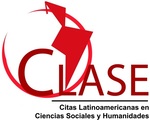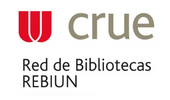Submissions
Submission Preparation Checklist
As part of the submission process, authors are required to check off their submission's compliance with all of the following items, and submissions may be returned to authors that do not adhere to these guidelines.-
The petition is original, has not been previously published, nor has it been submitted to another journal (or an explanation has been provided in Comments to the Editor).
- You are authorized to transfer to the publisher, on a non-exclusive basis, the rights to incorporate your digital version in the Institutional Repository and in the Journal Portal of the Argentine Catholic University, as well as in other databases that you consider to be of academic relevance. under Creative Commons licenses.
- The text complies with the section policy and other publication standards of the journal, which can be found in About the journal.
- The text meets the bibliographic and style requirements indicated rules for autohros, which can be found in About the journal.
- The standards of the Code of Ethics of the Committee on Publication Ethics - Code of Conduct and Best Practices Guidelines for Journals Editors (COPE) have been complied with. https://publicationethics.org
- The topic addressed corresponds to a current or significant problem in relation to the mission of the magazine: Prudentia Iuris objectives the elaboration of a legal thought coherent with the fundamental principles of Justice and the natural order, illuminated by Faith (Prudentia Iuris, nº 1, August 1980, p. 3)
- Authors who use AI tools in the writing of a manuscript, production of images or graphical elements of the paper, or in the collection and analysis of data, must be transparent in disclosing in the Materials and Methods (or similar section) of the paper how the AI tool was used and which tool was used. Authors are fully responsible for the content of their manuscript, even those parts produced by an AI tool, and are thus liable for any breach of publication ethics.
- If you are submitting to a peer-reviewed section of the journal, be sure to follow the instructions to ensure double blind review were followed.
Part II Research articles
1. Research Articles:
1.1 Works that meet the following requirements will be published in this section:
• That the subject makes scientific contributions and offers novel concepts that enrich knowledge;
• That there is coherence in the demonstrative or argumentative structure between the problem, the goals, the method, the results and the conclusions;
• That the bibliography is updated and relevant to the subject and that the text is unpublished.
1.2. Length: Papers submitted to this section may not be less than 4,000 or more than 12,000 words long.
1.3. Arbitration: These works will be submitted to the arbitration of evaluators according to the respective procedure.
1.4. Originality: The research works proposed for this section must be original, the authors agreeing not to present them simultaneously to another publication, nor to publish them without authorization from the journal Prudentia Iuris. The authors will state through the online management system of the Journal, or by a signed letter sent, the originality of the text.
1.5. The first content of the research articles. The first page will include:
a) The title and subtitle, if applicable, of the work in Spanish.
b) The name of its author or authors in bold followed by the author's summary curriculum. This must contain only the highest academic or professional degree achieved, as well as the academic affiliation of the author or authors (eg the current relationship of the author or authors with a university study center or equal in teaching or professional research work), their email address and your Orcid number (www.orcid.org). The particular acknowledgments that the author or authors want to give, as well as the assignment to sponsored scientific projects, must be indicated with an asterisk at the beginning of the article.
c) A summary of the work of between 100 and 150 words, which should be an abbreviated description of the content of the article mentioning only the central idea and the main points. Being brief, exact and clear in the language avoiding redundancy.
d) From three to six keywords in Spanish, separated by a semicolon.
The second page should include:
a) The title in English, followed by the abstract and the keywords separated by semicolons in English.
b) The title in Italian, followed by the abstract and the keywords separated by semicolons in Italian.
1.6 Updated bibliographic list: At the end of the work, the list of bibliography used must be included in alphabetical order and cited according to APA standards.
Part III. Notes and Comments
2. Notes and Comments:
2.1 Brief papers on legal topics, jurisprudence or legislation will be published in this section.
2.2 Length: The length must be less than 4,000 words.
2.3 Arbitration: These works will be submitted to the arbitration of evaluators according to the respective procedure.
2.4 Originality: The works proposed for this section must be original, the authors agreeing not to present them simultaneously to another publication, nor to publish them without the authorization of the journal Prudentia Iuris. The authors will state through the online management system of the Journal, or by a signed letter sent, the originality of the text.
RECENSIONS
Reviews of recent books (initially no more than two years old) with a maximum length of 2,000 words will be published in this section. The works, for inclusion in this section, must be approved by at least one member of the Editorial Committee.
Copyright Notice
The authors retain the copyright and guarantee PRUDENTIA IURIS the exclusive right of first publication. However, they may separately establish additional agreements for the distribution of the published version of the article, with an acknowledgment of its initial publication in this journal. The content is distributed under a Creative Commons Attribution-NonCommercial-ShareAlike 4.0 International License. Authors are allowed and encouraged to deposit their work in institutional and thematic repositories, academic social networks, personal websites and/or where they consider relevant in accordance with our Self-Archiving Policy Names and email addresses entered in this magazine will be used exclusively for the purposes set out in this magazine and will not be provided to third parties or for use for other purposes.
Privacy Statement










 e-ISSN 2524-9525 | ISSN 0326-2774
e-ISSN 2524-9525 | ISSN 0326-2774